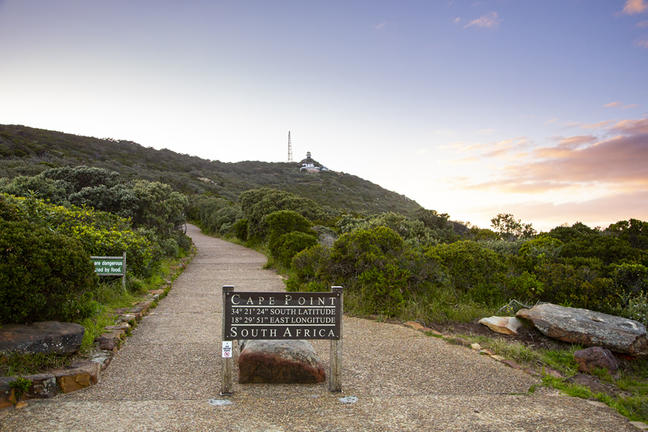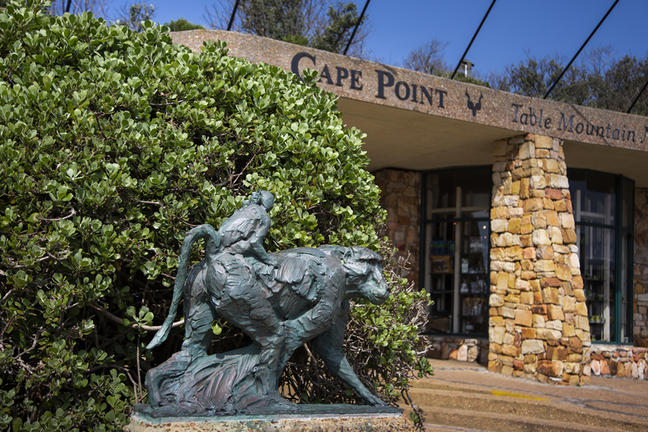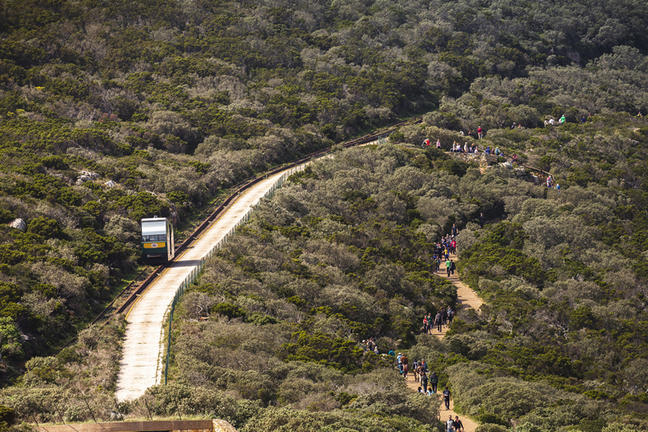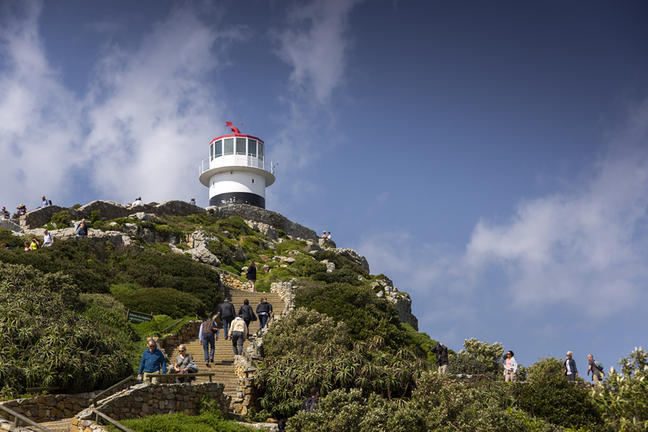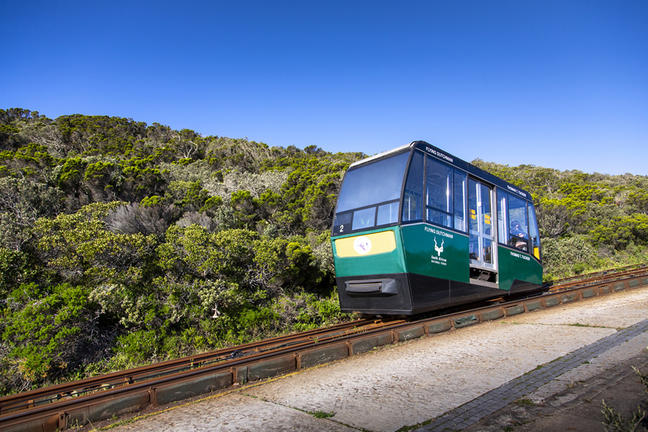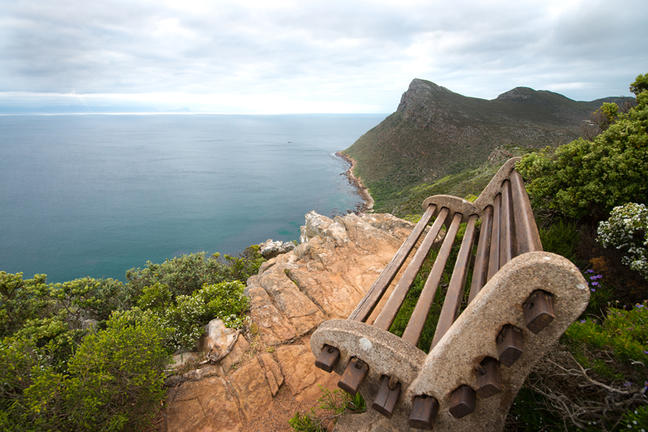An hour's drive from Cape Town is the Cape Point Nature Reserve, one of the most scenically beautiful parks in South Africa. Mountains, oceans, history, wildlife on land and in the water, legends and views that are as vast as the horizon. Framing this wild and dangerous coast are the two peaks - Cape Point and the Cape of Good Hope. Cape Point is the south-western most point of the continent and Cape Agulhas is the southernmost tip and it’s Cape Agulhas where the Indian and Atlantic Oceans meet. Wild and unpredictable oceans through which sailors struggled for centuries before finally being able to navigate their way around the tip of Africa. Even on a good day, the icy wind blowing in from the Antarctic, is a good indication of why it was such a perilous journey. The Flying Dutchman funicular will carry you up to the old lighthouse standing among the thick fynbos, the panoramic views, and, in the springtime – August, September and October, possibly even the sight whales in the ocean below. The impressive old lighthouse was built in 1859, but instead of guiding ships to safety, it was often the cause of mishaps. Ironically, it sits too high above the ocean, so ships approaching from the east saw the light too clearly and approached too closely ending up on the rocks. The Cape Point Shipwreck Trail is the short – 3kms - easily accessible Oliantsbos trail leading down to the beach where you can see the remains of the SS Thomas T. Tucker. Once a WWII transport vessel it’s now a popular photography subject and home to the local birdlife.
Nearby are the crosses erected by the Portuguese King John II to Vasco da Gama and Bartolomeu Dias in recognition of their expeditions to and around the then named Cape of Storms.
There are a number of secluded beaches in the reserve. Buffels Bay and Bordjiesdrif are relatively sheltered beaches. Their tidal pools are great for a post-hike dip. Diaz Beach is without a doubt one of Cape Town’s most beautiful but is a steep climb down and you can’t swim when you get there. Edged by wild, natural fynbos, with at least three shipwrecks, Olifantsbos Beach is also a marine protected area and has a nearby shallow lagoon, a favourite haunt of coastal birdlife.
Being a nature reserve Cape Point is home to a large variety of animals and bird life. Over 270 species of birds live here as well as antelope, Cape foxes, genets, polecats, mole rats, porcupines, mongooses, tortoises, and snakes.
The Cape Point is notorious for its strong icy winds even if the sun is shining. For the best experience you may want to consider a professional guide.
